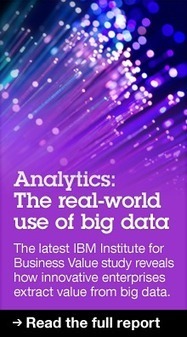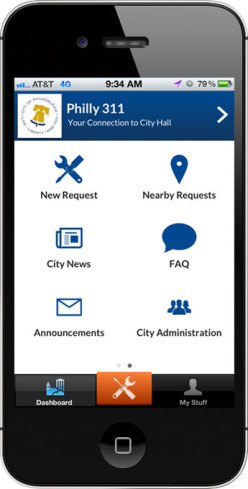Month: September 2013
6 Steps to Implementing a Sustainable Customer Service Program
Whether you are implementing a customer service program within your department or across an organization, it’s a more intricate process than simply creating a customer service plan. Too often are these plans put to action and quickly forgotten about. Truly implementing a customer service program involves sustainable changes to your organization’s culture and processes. While I’ve implemented customer service programs across small departments and large organizations, I’ve found that there are essential steps you can take to ensure that the program is not only great but sustainable.
1. Get real feedback from your customers. Conduct focus groups for your internal and external customers to understand their wants and needs. While most of us think we know what our customers want and why they want it, conducting un-biased focus groups can reveal surprising experiences as well as low hanging fruit. This allows you to find sustainable solutions to satisfy your customer.
2. Use the feedback to get buy-in. Getting buy-in from your organization’s leaders can be difficult when implementing any program. Buy-in, however, is essential to your program’s sustainability as it ensures resources, support and push-back when needed. Using feedback from your customer focus groups is a great way to justify the need for your customer service program.
3. Based on feedback and input from leadership, create a vision statement. Create a vision statement that is the perfect blend of “ideal” and “reality.” It should paint a picture of where you hope to be, without ignoring where you think it’s possible to be. Your vision statement should also align with your department/organization’s mission and values.
4. Create a realistic customer service plan. Use your vision statement to guide the initiatives and processes in your customer service plan. Every aspect of your customer service plan should also tie to the Voice of the Customer based on your focus groups. To better your chances for sustainability, do not create a customer service plan with too many wide-sweeping initiatives: this might present too dramatic of a change to your organization’s operations. Instead, choose one large customer service initiative to tackle in your first year.
5. Develop customer service performance metrics to track progress. Based on the initiatives in your customer service plan, develop specific metrics to track performance. Again, for sustainability purposes, don’t implement your customer service plan and expect to track dozens of metrics. Choose 1-5 important metrics to start.
6. Choose the right person/people to be accountable for the program. If you’re implementing a customer service program within your department, chances are you’ll just have one person who “owns” the customer service operations. If you’re spanning across an organization you may have plenty more. Either way, the person/people who are to be held accountable for customer service metrics need to be both educated on the V.O.C. and the customer service plan as well as have some authority to change the customer service operations.
What steps have you taken to ensure your customer service program is sustainable? Let me know in the comments.
Get Smart: Get Social with Customer Service Interactions
Customer Experience Excellence Best Practices
RT @OracleCX: #Social customer service – the guide to getting it right [infographic] #custserv #CX http://t.co/uJGsyg906Q
Top 10 customer experience trends | Impact Lab
Organizations that offer a better customer experience have more customers who say they are willing to buy from them again, according to Forrester. However, if
I agree with the statement – Organizations that offer a better customer experience have more customers who say they are willing to buy from them again, according to Forrester.
See on www.impactlab.net
Customer Service: Telephone Still #1 Customer Preferred Channel
Customer Experience Excellence Best Practices
Social media is becoming a customer service trend, but the telephone is still the preferred contact method for many customers – so you need to make it work.
See on www.sharynmunro.com.au
10 Best Practices to Improve Customer Service [INFOGRAPHIC]
Customer Experience Excellence Best Practices
Today’s modern customer is changing the world of customer service. They’re using more channels of communication, making informed decisions and are quick to make demands. How can your organization keep up?
See on blogs.salesforce.com
Should Government Contact Center Operations Services Go Mobile? YES!
Over the past few years, mobile channels have increasingly become a mainstay in many organizations customer service operations. The organizations that have implemented mobile strategies have literally bought into the nearly endless capacity and need for a mobile channel. Other organizations, looming on the outskirts of mobile implementation, view the mobile channel as a technological luxury (excessive, even, in some cases) and do not take the time to explore their mobile options or to listen to the needs of their customers.
For example, a few months back, a technology vendor, Salesforce, blog post highlighted an interview with VP of Product Marketing for Salesforce’s Service Cloud Tony Kavanagh about why mobile customer service is a must. Tony made great points about the uses and need for the mobile and social channels in this interview. As someone who has implemented a mobile strategy in the public sector, I wanted to weigh-in on this topic as well.
In my experience, our move to implement a mobile customer service strategy was a reaction to the lifestyle change of our customers. In recent years, more and more people have moved to a mobile lifestyle—saying goodbye to landlines and using phones for the Internet more than laptops. We saw our customers living on their phones more than anywhere else. This made the decision very easy. Why wouldn’t we offer a channel where our customers spend the most amount of time? Why wouldn’t we open a channel that our customers are more comfortable with using?
Another aspect of mobile customer service that was appealing was that mobile is more flexible than any of our traditional touch points. While IVRs are easily manipulated, call centers as a whole are robust bodies of technology; traditionally they are not readily versatile in lieu of a crisis. We found mobile to be a flexible channel that we can use to pump out instantaneous information as quickly as our customers needed it—wherever they were.
During his interview, Tony Kavanagh was asked: “Do you think that the balance of power is shifting from the business to the consumer? Why?” He answered that the power absolutely was shifting to the consumer and I couldn’t agree more. Customers, now more than ever, want to be empowered by self-service channels. They want easy-to-use portals, ready information and quick responses. A mobile strategy solves all of these problems: if designed correctly with the right technology, customers can have easy-to-access support, 24-hours a day from wherever they are. So far, it’s currently one the most empowering and leading customer service channel in today’s market place.
10 Best Practices to Improve Customer Service [INFOGRAPHIC]
Customer Experience Excellence Best Practices
Today’s modern customer is changing the world of customer service. They’re using more channels of communication, making informed decisions and are quick to make demands. How can your organization keep up?
Very informative and concised list of customer service strategies to engage today’s modern/informed customers.
See on blogs.salesforce.com




 “Is this a Golden Age for citizen involvement in government? As dismayed as some may be with the political process, there are growing opportunities for meaningful engagement in many areas, thanks to growing social media tools and a willingness to participate by many ordinary people.
“Is this a Golden Age for citizen involvement in government? As dismayed as some may be with the political process, there are growing opportunities for meaningful engagement in many areas, thanks to growing social media tools and a willingness to participate by many ordinary people.



